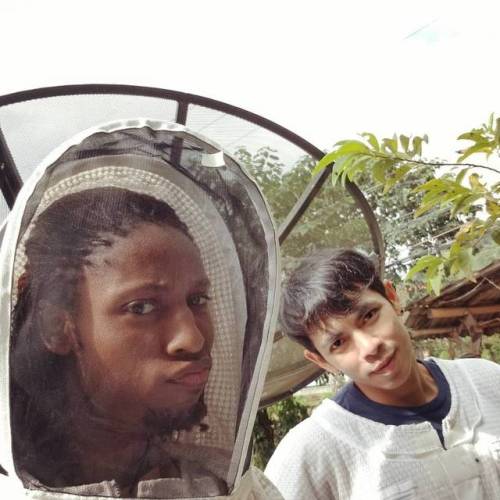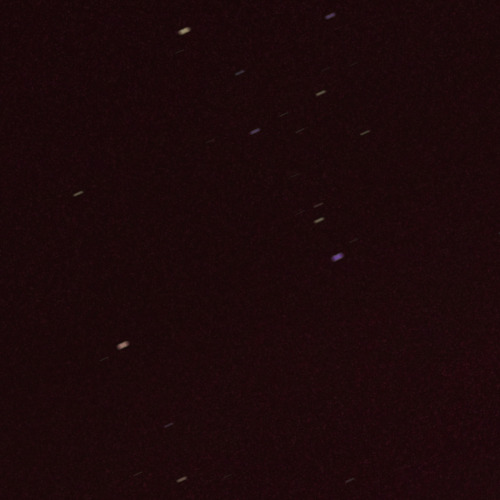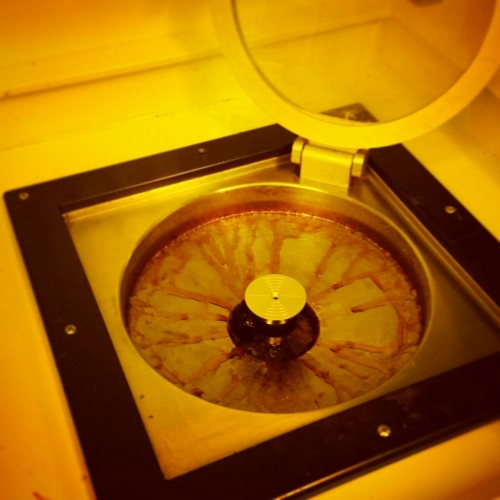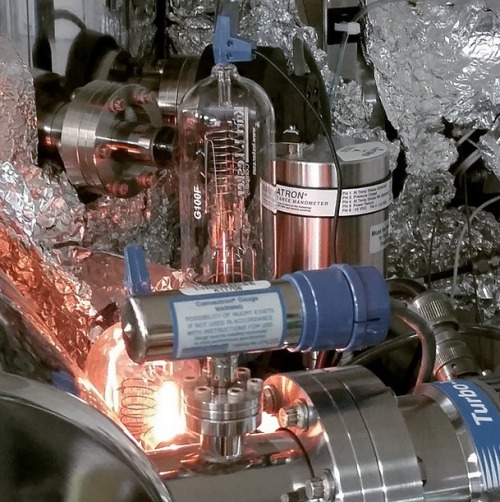#research
Putting on that game face; getting ready to wrangle these wild bees! I’m glad I brought a second bee suit! P'Banky (a grad student friend from the lab) was going to help me do this in shorts! Short Shorts!! Let’s just say there are places from which I don’t want to help someone remove a stinger!
#ต่อย #HoneyHunt #MaeRim #MaeRimChiangMae #DoctorBuggs #Entomology #ตื่นเต้นจังเลย #HoneyBees #Apiscerana #AsianHoneyBees #doisuthep #research #researcher #wildbees #ดอยสุเทพ
(at โรงเรียนวัดโป่งแยงเฉลิมพระเกียรติ)
Post link
Inspired by the love shown to my “witches are librarians and authors” post, let me teach you all about a lovely tool called WorldCat. If you are a massive research nerd like me and want to track your sources for things? This site’s going to make things so much easier. (Witches in school? Listen up because this site is good for schoolwork too.)
What is it?
WorldCat is, first of all, a network of library content and services. Looking for books, music, videos, research papers, audiobooks… this site has them all indexed! It can point you at content in databases your local library has access to AND lets you ask a librarian for help if need be. There’s even a place to check reviews or write one yourself.
How can this help you be a better witch?
Saved Searches - Looking for a particular topic, like the history of witchcraft? Once you identify the search terms that give you the best results, you can save the search to reference later.
Lists of Sources - Like a book? You can save it to a list! You can keep these private, share them with others, and add notes on each book listed! If you are a real info nerd (like me), you can even get a citation in whatever format you prefer. Items can be tagged, and you can add list descriptions to reference later. Book has more than one edition? You can indicate that too! It’s a fantastic way to remember what you liked and what you didn’t.

There’s a bunch of other useful tools, but these are the ones I use the most. Let my knowledge of research sites aid you in being a better witch!
the worst thing about writing is that you aren’t just a writer. you have to be a thousand things. a poet, a flirt, a weapons expert, a bleeding heart, a scholar, a legendary cook, a theorist, an engineer, a reckless teenage girl, a dying god. you have to be able to write monologues and speeches and heartfelt confessions, and you have to make them believable. writing is putting yourself into someone else’s shoes.
writing is really hard (◕︿◕✿)
But you know what? The BEST PART about writing is that you aren’t just a writer. You get to be a thousand things: a poet, a flirt, a weapons expert, a bleeding heart, a scholar, a legendary cook, a theorist, an engineer, a reckless teenage girl, a dying god.
It’s like acting, only you can do it in your pajamas on your couch and you don’t have to look a certain way.
please if anyone knows any people who did/are doing a MA in the US, and are from china, hong kong, or taiwan, ask them to participate in this study my friend is running! It’s just a short questionnaire, but if you could sign up for a 1-hour interview that would be even better! prizes for participants.
Post link
Could anyone give me any advice?
I’m currently in my final year studying BA History and Politics, and am in the process of applying for a scholarship to study MA History of Medicine. For the application I need to write an diss proposal, it only needs to be a side of A4 and I have some ideas but no idea how to tell if they have potential or where to take them from here. If anyone has any advice or experience with these sorts of applications or with the field it would be amazing to run some ideas past you. Thanks!
I need some advice! Does anybody run/contribute to an online blog? Me and a friend are thinking of putting something together for mini essays/articles/thoughts, but honestly I don’t have a clue where to start and any tips would be amazing!
Discovery “This Is AI” Documentary
Discovery, in collaboration with IBM, has created a documentary exploring the current and future landscape of AI. Titled “This Is AI,” the two-hour film showcases the different ways AI is helping to transform industries—and people’s daily lives—all over the world. Get an up-close look at a debate using IBM’s breakthrough AI technology, Project Debater, and see how IBM Watson is supporting students in the classroom and helping researchers find new treatment options for Parkinson’s disease. These exciting projects, and the many more featured in the film, show us where AI is today—and where it’s going tomorrow.
Post link
As 2019 is drawing to a close, the Materials World team wanted to highlight a couple of stories to end the year on a high note. On Wednesday we shared the news story that got the most clicks on our website in 2019.
Today, we are sharing the top feature. We hope you enjoy and Merry Christmas from the editorial team.
15 UNDER 30
By: Idha Valeur
IOM3 is looking to the future and celebrating young talent and ambition. Idha Valeur talks to the ones to watch in STEM.
Kyle Saltmarsh
Age:27
Job:Robotics Engineer at Woodside Energy.
Education:PhD Engineering in Submarine Vibration and Acoustics, BSc in Physics and Applied Mathematics, BME (Honours).
Current project: Deployment of robotic technology onto Woodside’s oil and gas plant for surveillance, and performing tasks through robot manipulation.
Achievements: Best honours thesis, several hackathon wins, top IBM 2018 graduate in Australia/New Zealand, 2018 Young Persons’ World Lecture Competition Winner, world’s largest bungee jumper, blogger and hosting a podcast to inspire people in technology.
Ultimate goal: To positively impact the world through the power of technology.

Kyle Saltmarsh Image credit: Brent Campbell
Jennie Palmer
Age:26
Job:Research Engineer.
Education: Undertaking an EngD in Structural Metals for Gas Turbine Applications, BEng in Aerospace Engineering, with a year in industry, Swansea University.
Current project: I am researching the development of bespoke test facilities and fundamental understanding of thermo-mechanical fatigue crack growth behaviour in titanium alloys.
Achievements: Graduating with a BEng in Aerospace Engineering with First-Class Honours, presenting my research at national and international conferences, having research published in an internationally recognised journal and a Green Belt Certificate in Lean Six Sigma.
Ultimate goal: To become a well-established, technical expert in my engineering field.

Jennie Palmer Image credit: Jemima Bond
Ilija Rašović
Age:27
Job:Lecturer at University of Birmingham
Education:MEng in Materials Science at Corpus Christi College, Oxford. DPhil in Materials at St Cross College, Oxford.
Current project: The use of fullerenes — nanometre-sized balls of carbon — in biomedical applications. One of the methods I have devised, to make them soluble in water, helps in the formation of large self-assembled structures that hold great promise as multi-modal drug delivery vehicles.
Achievements:The IOM3 international Literature Review Prize in 2016. Final of the IOM3 Young Persons’ World Lecture Competition in 2017. I joined the P1 Graphene Solutions as an advanced materials engineer and became a lecturer at the University of Birmingham. In 2019, I joined IOM3’s Younger Members’ Committee.
Ultimate goal: To make a contribution to the wide deployment of transformative nanomedicine in a clinical setting within my lifetime. My broader vision is to continue to champion materials science and make more accessible the obfuscated world of academic research.
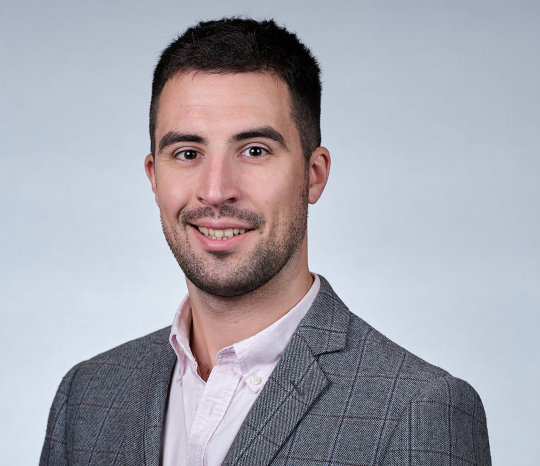
Ilija Rašović
Amanda Field
Age:25
Job: Development Engineer.
Education:BEng Materials Science and Technology, University of Birmingham.
Current project: Trying to finish my PhD on additive manufacturing of tungsten for nuclear fusion reactors. It’s challenging but worthwhile because the success of nuclear fusion would go a long way to solving the energy crisis. I’m working in additive manufacturing.
Achievements: I have presented my work at international conferences. I was involved with an experimental parabolic flight campaign for the European Space Agency where we used a demonstrator device to 3D print metal in zero gravity. I came second in the IOM3 Young Persons Lecture Competition.
Ultimate Goal: To keep working in additive manufacturing. I’d like to stay in R&D as you get such variety in your role and you have the potential to make significant improvements to a product or a technology, or design new ones yourself.

Amanda Field Image credit: Luke Carter
Jack Saunders
Age:25
Job: PhD Student in Materials Chemistry.
Education:MChem with a year in industry, University of Manchester.
Undertaking a PhD in Materials Chemistry, University of Manchester, in collaboration with AkzoNobel.
Current project: To analyse the impact of different polymers on the corrosion protection afforded by emulsion paints. I aim to achieve this by synthesising and testing polymer’s corrosion performance. This is to better understand how polymer chemistry can affect the corrosion protection offered by the dried paint.
Achievements: A First Class Master’s degree in chemistry. My PhD at the School of Materials at The University of Manchester. Awarded the President’s Doctoral Scholar Award. Presented my work at conferences such as the RSC’s MacroGroup YRM, Dublin, 2018. Won the regional Young Persons’ Lecture Competition this year.
Ultimate goal: To develop my research and management skills in order to have my own research group in the field of polymer chemistry and colloid science.

Jack Saunders Image credit: University of Manchester
Megan McGregor
Age:25
Job: PhD Candidate at the Department of Materials Science & Metallurgy, University of Cambridge.
Education: MSci in Natural Sciences, University of Cambridge, specialising in Materials Science.
Current project: A PhD project investigating a new intermetallic alloy for commercial gas turbine engines. Specifically, trying to develop a novel coating material required to attach abrasives onto the end of rotating turbine blades, in pursuit of a more efficient sealing system.
Achievements:I enjoy teaching in the department, and was recently awarded the Departmental Demonstrator Prize. I talked at the Cambridge Science Festival and the inaugural Cambridge Soapbox Science event. I will be representing the South Eastern Region in the final of the IOM3 Young Persons’ Lecture Competition this year, selected for an RCUK Public Policy Internship at the Government Office for Science in 2018, where I got to contribute to government policy.
Ultimate goal: To see the material I am working on make it into a commercial gas turbine engine. I want to take my expertise in this area into industry, and be able to contribute to the development of the hybrid-electric aircraft sector.

Megan McGregor Image credit: Andrew Jeskins
Abigail Georgia Robinson
Age:22
Job:Geology student.
Education:MGeol in Earth and Environmental Sciences, University of St Andrews, graduating in 2020.
Current project: I will co-lead an expedition to the Lofdal Complex, Namibia, which hosts a suite of carbonatitic and silicic igneous rocks, some of which are enriched in heavy rare earth elements. I aim to integrate geological field data with geochemical and isotopic datasets to model the petrogenesis of the scientifically interesting igneous rocks.
Achievements: I was awarded the prestigious Laidlaw Scholarship in Research and Leadership in 2018. This supported my field campaign in Armenia, to investigate the interplay between climate change, hydrology and medieval irrigation systems. I did a research placement at the Scottish Universities Environmental Research Centre where I learned to code in Python and used this to statistically investigate the geographical origin of lunar meteorites across the lunar surface. This work was included in Dr Marissa Tremblay’s published abstract and presentation at the 2019 Lunar and Planetary Science Conference, USA.
Ultimate goal: I plan to embark on a PhD on the tectonically imposed planet-wide cycling of the volatile elements. I plan to be an active communicator promoting an understanding of geoscience and the global scale problems that we, the geoscientists, can work to solve.
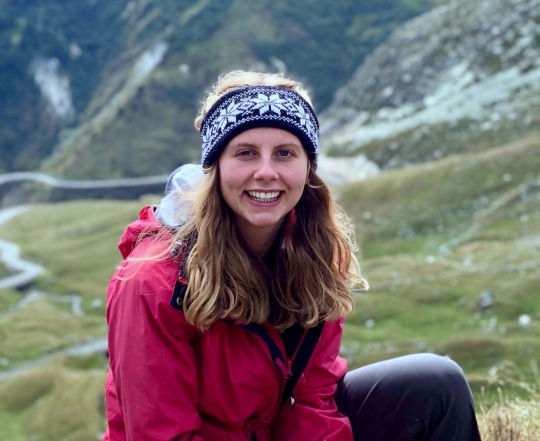
Abigail Robinson Image credit: Evan Margerum
Federica Rosaria Lisa
Age:24
Job:Technical Graduate at British Steel.
Education:MChem Chemistry with Forensic Science with a year in industry, University of Leicester.
Current project: A variety of research and development projects – one on understanding and reducing the factors that influence power and electrode consumption at the ladle arc furnaces in the secondary steelmaking process.
Achievements: Graduated with a First Class Honours and secured a 12-month industrial placement and a place on a graduate programme. I succeeded in my secondary school exams after moving to a new continent and starting International School.
Ultimate goal: To work for a sustainable discovery/development that will improve lives and I would like to lead a company. I would also like to promote the importance of education, support developing countries in the construction of more schools and strengthen the educational system.

Frederica Lisa Image credit: Johnny Gallagher
Daniel Everington
Age:26
Job: Materials Technologist – Surface Engineering.
Education:MEng Aerospace Engineering with a year in industry, University of Sheffield.
Current project: Surface engineering at Rolls-Royce. I’m involved with different projects across the engine, including compressor sealing systems, hot end environmental protection and anti-seize coatings.
Achievements:Developed a novel method to flow test ceramic filters used in the investment casting process. The technique contributed to a 3% improvement in casting yield and the reduced variation helps lower the amount of metal. Patents may be filed on the work.
Ultimate goal: I’d like to work with academia to co-develop novel coatings/surface treatments. I enjoy the challenges that come with working on new technology as the answers can’t simply be found in a textbook.

Daniel Everington Image credit: Alistair Coast-Smith
Louise Gale
Age:28
Job: Materials Engineer at Rolls-Royce Plc.
Education:MSci & MA in Natural Sciences, specialising in Materials Science, University of Cambridge.
Current project: The development of ceramic matrix composites for introduction into aerospace gas turbine engines. My responsibilities include running mechanical testing programmes, supervising work at our university partners as well as the analysis and fractography of tested samples to elucidate damage mechanisms.
Achievements:Completing the Rolls-Royce Graduate Scheme, including obtaining funding for an international placement in the Materials Testing Department in Berlin. I became Technical Lead of a £2.5mln project which was part of a government-funded programme to develop SiC/SiC ceramic matrix composites. I developed the £7mln, three-year materials development component to the follow on project that was approved in late 2017.
Ultimate goal: To become an expert on ceramic and composite materials systems.

Louise Gale Image credit: Stephen Gale
James Grant
Age:24
Job:EngD student with TATA Steel and M2A, Materials and Manufacturing Academy.
Education:School of Physics and Astronomy, Cardiff University, College of Engineering, Swansea University.
Current project: Development of novel coating solutions for the improvement of pre/post heat treatment of carbon steel conveyance tubes. My project aims to reduce high-temperature oxidation caused by the normalising process.
Achievements:I developed a novel anodisation system for fabricating alumina masks in the molecular beam epitaxy application. In addition to this, my placement with Merck successfully optimised electrophoretic fluids to further enhance the E-ink display technology. I’ve been competing in the 2019 IOM3 Young Persons Lecture Competition. Having won the SWMA heat and the South West Regional, presenting at the national final in May.
Ultimate goal: To educate and encourage the next generation of students to take up STEM subjects. I hope I can engage and excite a younger audience about materials science and demonstrate the opportunities available in engineering.

James Grant Image credit: James Grant
Vidya Chamundeswari Narasimhan
Age:28 years
Job:Post-doctoral Research Fellow Department of Materials Science and Engineering, NTU.
Education:PhD in Materials Engineering.
Current project: Developing responsive nasogastric tubes for the elderly and using nature-derived biopolymers for biomedical applications.
Achievements: Young Scientist Award conferred by VIWA in India, Title Winner of the IOM3 Young Persons’ World Lecture Competition 2017, Women in Engineering Travel Grant in 2018, Chair of the Young Scientists Forum at the European Materials Research Society conference in Poland 2018.
Ultimate goal: To lead and manage a diverse team, foster interdisciplinary collaboration and offer R&D support for cutting edge research in the healthcare sector. I also want to contribute significantly towards mentoring the next generation of young girls towards pursuing exciting careers in STEM fields.
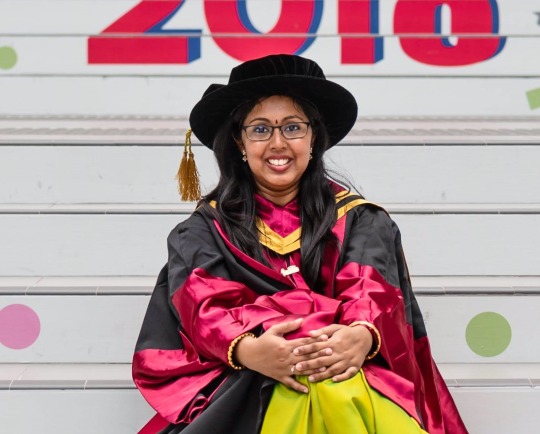
Vidya Chamundeswari Image credit: Dr Rohit Satish
Frederick Cooper
Age:28
Job:Research Engineer and PhD student.
Education: BEng with Honours, Swansea University.
Current project: Microstructural and mechanical characterisation of flow formed F1E – a novel, maraging steel.
Achievements:Used flow form to develop materials for detailed metallographic, micro-textural, and mechanical assessment. I run two small businesses, have an Associate Diploma from the National College of Music, and an Associate Fellowship of the Higher Education Academy and was appointed as a Yeoman of the Worshipful Company of Tin Plate Workers.
Ultimate goal: To complete my current project and transfer a comprehensive mechanical property database detailing static and fatigue performance to a major engineering sponsor – to enable novel component manufacture. Further, I would like to use my experience to develop a career in public engagement or education.

Frederick Cooper Image credit: Lauren Ednie Photography
Robert Hoye
Age:28
Job:Royal Academy of Engineering Research Fellow.
Education:PhD, Cambridge University, BE(Hons).
Current project: I am looking at two areas that could accelerate the scale of photovoltaics. This makes an attractive technology for producing clean energy, especially in remote regions.
Achievements: Developed a recombination contact to couple a metal-halide perovskite top-cell with an n-type silicon bottom cell, which lead to new design rules to identify promising classes of materials that could tolerate defects, and an all-inorganic device structure that led to 80% external quantum efficiency in solar cells. This went on display in the Deutsches Hygiene-Museum in Dresden, Germany. 2018 Young Engineer of the Year Award by the Royal Academy of Engineering, which also awarded me £500,000 to start an independent group at the University of Cambridge. European Forbes 30 under 30 list.
Ultimate goal: To create new classes of defect-tolerant semiconductors that can be used as low-cost and efficient top-cells in tandem with silicon.
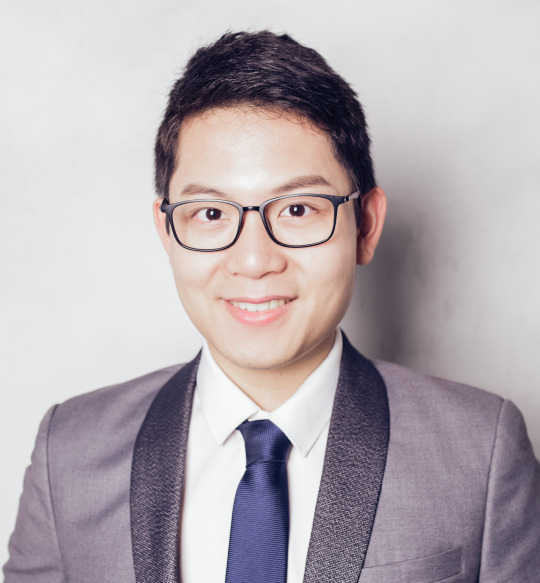
Robert Hoye Image credit: Zoe Chung
Matthew Wadge
Age:24
Job:PhD Researcher.
Education: BSc(Hons) Biomedical Materials Science & PhD (ongoing), University Of Nottingham.
Current project: Exploring novel formation and ion-exchange reactions of titanate surfaces for biomedical applications.
Achievements:Achieved eight awards during my undergraduate degree including the Best Student Prize, Best Project Prize, and The Armourers and Brasiers’ Best Student Prize for achieving the highest project mark within the faculty. I have since won the Armourers and Brasiers’/TWI Best BSc/BEng Student of the Year Award, Best Oral Presentation Prize from the UK Society for Biomaterials Conference in 2018. Published my first journal paper during the first year of my PhD. I am one of the Nottingham coordinators for this year’s Pint of Science festival.
Ultimate goal: To try and improve a patient’s quality of life, from improving fixation of hip stems for improved longevity, through to antibacterial surfaces for minimising infections. I aim to continue on into academia post PhD to share my experiences, and hopefully train the next generation of bioengineers and biomaterial scientists.

Matthew Wadge Image credit: Matthew James

Credit: De Montfort University Leicester
By Idha Valeur
By using domestic waste plastic such as coffee cup lids and plastic bottles to create a new style of bricks, researchers from De Montfort University Leicester (DMU) proved a plastic waste brick could improve insulation by 10 times compared with traditional ones.
The university’s Senior Lecturer in Mechanical Engineering, Dr Karthikeyan Kandan explained that the inspiration came from nature, specifically from the nest of the Baya weaver – a bird found in the Indian subcontinent and Southeast Asia in general.
‘The Baya weaver bird’s nest’s ingenious construction gives it excellent thermal insulation and mechanical properties for inhabitation,’ Kandan said in a university release.
‘Inside there is a central nesting chamber, which makes it the ideal micro-climate for inhabitation. By replicating this structure, we have manufactured a brick that improves energy efficiency of modern buildings and therefore can reduce carbon footprint.’
The brick is 3D-printed and uses lattice architecture technologies, this include criss-cross strips of the plastic over each other to form a grid-esque structure in the brick.
To test the brick, DMU PhD Student, Saad Alqahtani, used a hot-box calorimeter to measure the brick’s U-value, a measure of the heat flow through insulating and building materials. A lower value means better insulation properties.
The bog-standard clay brick has a U-value of 2.94 Watts per Metre Kelvin (W/m²K), while Kandan’s new waste brick showed a value of 0.25 W/m2K.
‘This provides significant potential to not only improve the energy efficiency of modern building, but also to conserve space and reduce dead-weight in multi-story buildings,’ Kandan said.
Hey followers! The articles are posted through PubMed Central, which means most of them are biomedical/life science research, but that doesn’t mean there isn’t any materials science!
The 800+ NASA articles released include topics such as:
- Single Photon Counting UV Solar-Blind Detectors Using Silicon and III-Nitride Materials
- The first X-ray diffraction measurements on Mars
- High Temperature, High Power Piezoelectric Composite Transducers
- Shape-controlled synthesis of palladium and copper superlattice nanowires for high-stability hydrogen sensors
- Carbon-covered magnetic nanomaterials and their application for the thermolysis of cancer cells
- Silicon Encapsulated Carbon Nanotubes
- Characterization of Corning EPMA Standard Glasses 95IRV, 95IRW, and 95IRX
- Fullerenes: An extraterrestrial carbon carrier phase for noble gases
- Synthesis Methods, Microscopy Characterization and Device Integration of Nanoscale Metal Oxide Semiconductors for Gas Sensing
- and many more…
Check it out if you’re interested!
Post link
On the menu for this weekend:
- Design survey questionnaire for factor analysis (I’m doing a research study to determine why so few math students are using online tutoring at my institution)
- Get approval from Institutional Research department to deploy my survey
- Diddle around with Tableau (I want to build a faculty-facing data dashboard breaking down tutoring utilization at my institution)
Y’all, I think I’m doing it! I think I’m growing into a baby data scientist!

Far future / fictional spacecraft
Something simple this time.
Swordfish IV spacecraft performing an acceleration burn.
As always, prints of this or other artworks are available in my print shop at Artstation and if you prefer metal plates, you can get them at Displate.com
Post link
7.9.2019.
Spent the morning before my lecture to create phase diagrams for one of my master’s projects. Trying to estimate the solid solution strengthening possibilities of all the elements in a system.
Post link
So there’s a post in the asexuality tag that you can go find if you want that’s made me a little upset. The thing is, it’s not really about what the post is saying (which is why I’m not responding directly to the author), but rather how the author frames hir argument. Namely: shut up you ignorant people, you don’t know anything about the Academic Framework, so therefore you may not comment.
This is sort of a variation on a theme I’ve heard quite a few times (another reason this isn’t directed solely at the author of today’s post), and between it and “stop appropriating things from ‘real’ queer people,” it’s come to give me an increasingly large amount of anxiety. Now, I am aware that “you just don’t understand or else you’d agree with me” is a near-universal reaction of people when faced with a differing opinion, but the deeper implication of who is allowed to participate in discussions and who is not is troubling to me.
I really do feel like if you’re a member of a marginalized group, a graduate degree in a social science should not be a prerequisite for participation in the conversation about that group. If someone’s understanding of a concept is flawed, that doesn’t necessarily invalidate what they’re saying, and I really do take exception to the derision I’ve seen toward people just trying their best to articulate their lives, however clumsily.
Particularly when it comes to the asexual community, we’re just supposed to wait until researchers get around studying us and then accept their conclusions (or the conclusions we can draw from their abstracts) as truth because they did the research and understand the model? How long are we required to wait quietly for this surge of interest? What recourse do we have if we perceive the conclusions to be flawed? Besides going to graduate school ourselves, of course.
I get it, I really do. I am not above having said, “You are aware that science doesn’t work that way, right?” many a time before. It’s frustrating to see people Doing It Wrong, and I am not demanding that one must educate before one impugns (although I personally would appreciate it). But I feel that one must also be aware that there is Academic Discourse and there is Popular Discourse, and popular discourse is what’s really relevant to most people in addition to being the only kind they can really engage with. Particularly for groups whose experiences are not widely represented, internal popular discourse is the only thing they have to attempt to define themselves and make connections. People are going to come to the discussion with different levels of sophistication to their ideas, but if it’s their discourse for them, I don’t see how anyone can tell them to gtfo with a clear conscience.
And for the other group of people who say things like this because they believe asexuality isn’t actually a real sexual orientation, well, you just don’t understand, because if you did you’d agree with me :P
A recent study has confirmed what we all probably already suspected: watching cat videos boosts energy and positive feelings. Yay! :)
Here is a video to give you a boost: https://www.youtube.com/watch?v=q1dpQKntj_w
You can read more about the study here: http://news.indiana.edu/releases/iu/2015/06/internet-cat-video-research.shtml
Those having access to ScienceDirect articles can check out the actual research paper here: http://www.sciencedirect.com/science/article/pii/S0747563215004343
Post link
A selection of evaporation sources in our cleanroom. Evaporation is a thin film deposition technique where the material is heated up to above its melting point in vacuum, typically using an electron beam. The molten material evaporates and is redeposited on your samples which are positioned near the source. Common materials that can be deposited using this technique include gold, copper, titanium, platinum, nickel, iron, silicon dioxide, and carbon.
Post link
I spent part of the day today spinning photoresist. Photoresists are light sensitive chemicals used in photolithography. They are spun onto the sample at high speeds, using a tool like the one in the picture, to ensure an even coat. Yellow lighting is used in rooms dedicated to resist application and processing to prevent it from getting exposed. Once the resist is applied, a pattern can be transferred to your sample by exposing only certain areas to light.
Post link
Ion gauges on one of our deposition systems.
Ionization gauges are commonly used to measure pressure in high vacuum. They look and operate very much like a light bulb. Electrons are emitted from a central heated filament (the glowing part) and accelerated toward a helical wire or “grid” around the filament. Some of these electrons collide with gas molecules and ionize them. The ions are then attracted to a collector filament, creating a current which can be measured. The magnitude of the ion current depends on the pressure and composition of the gas.
Post link

